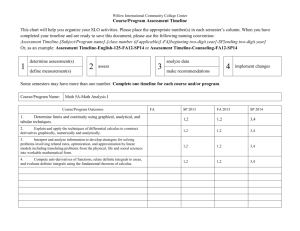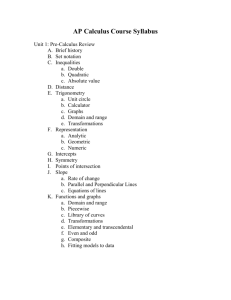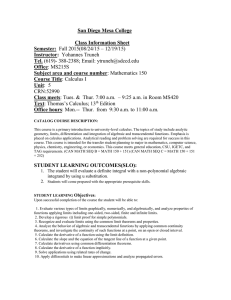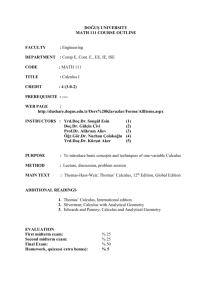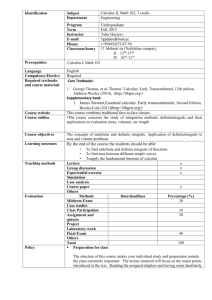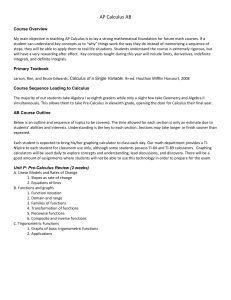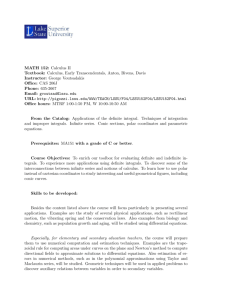Math1830 Course Inventory
advertisement
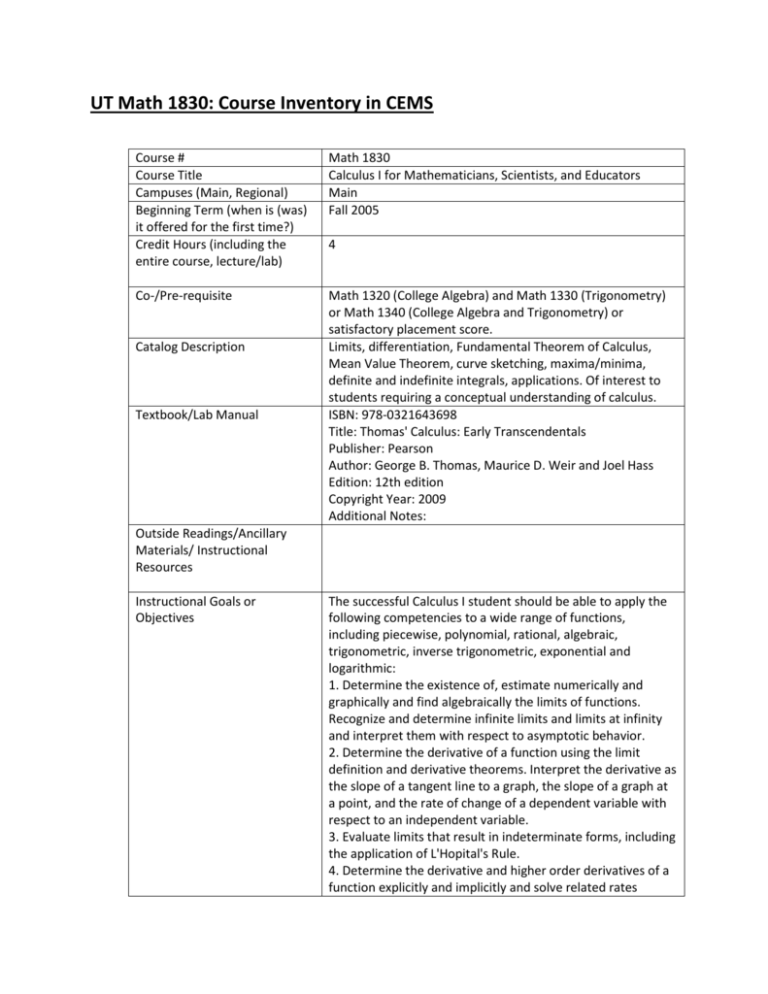
UT Math 1830: Course Inventory in CEMS Course # Course Title Campuses (Main, Regional) Beginning Term (when is (was) it offered for the first time?) Credit Hours (including the entire course, lecture/lab) Math 1830 Calculus I for Mathematicians, Scientists, and Educators Main Fall 2005 Co-/Pre-requisite Math 1320 (College Algebra) and Math 1330 (Trigonometry) or Math 1340 (College Algebra and Trigonometry) or satisfactory placement score. Limits, differentiation, Fundamental Theorem of Calculus, Mean Value Theorem, curve sketching, maxima/minima, definite and indefinite integrals, applications. Of interest to students requiring a conceptual understanding of calculus. ISBN: 978-0321643698 Title: Thomas' Calculus: Early Transcendentals Publisher: Pearson Author: George B. Thomas, Maurice D. Weir and Joel Hass Edition: 12th edition Copyright Year: 2009 Additional Notes: Catalog Description Textbook/Lab Manual 4 Outside Readings/Ancillary Materials/ Instructional Resources Instructional Goals or Objectives The successful Calculus I student should be able to apply the following competencies to a wide range of functions, including piecewise, polynomial, rational, algebraic, trigonometric, inverse trigonometric, exponential and logarithmic: 1. Determine the existence of, estimate numerically and graphically and find algebraically the limits of functions. Recognize and determine infinite limits and limits at infinity and interpret them with respect to asymptotic behavior. 2. Determine the derivative of a function using the limit definition and derivative theorems. Interpret the derivative as the slope of a tangent line to a graph, the slope of a graph at a point, and the rate of change of a dependent variable with respect to an independent variable. 3. Evaluate limits that result in indeterminate forms, including the application of L'Hopital's Rule. 4. Determine the derivative and higher order derivatives of a function explicitly and implicitly and solve related rates Description of Assessment and/or Evaluation of Student Learning problems. 5. Determine absolute extrema on a closed interval for continuous functions and use the first and second derivatives to analyze and sketch the graph of a function, including determining intervals on which the graph is increasing, decreasing, constant, concave up or concave down and finding any relative extrema or inflection points. Appropriately use these techniques to solve optimization problems. 6. Determine antiderivatives, indefinite and definite integrals, use definite integrals to find areas of planar regions, use the Fundamental Theorems of Calculus, and integrate by substitution. 7. Become familiar with mathematical logic, definitions and theorems. Students will be required to justify their solutions, therefore writing is very important in this course. Quizzes: 25-30% 2-3 Midterm exams: 40-45% Comprehensive final exam: 25-30% Additional Information Please attach syllabi (including co-/pre-requisite and current working and master syllabi for Transfer Module courses).


